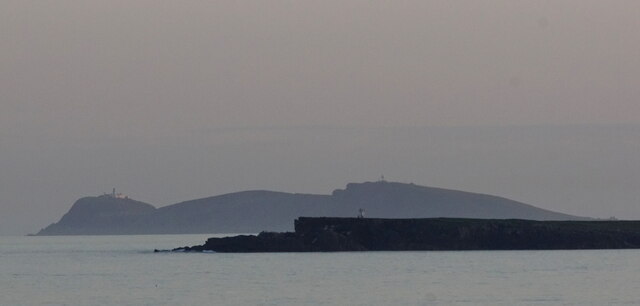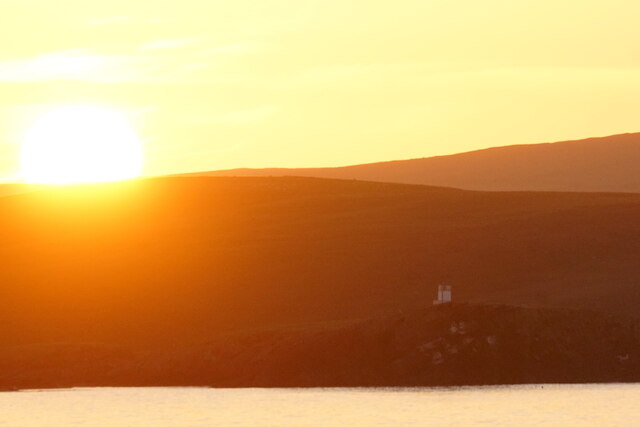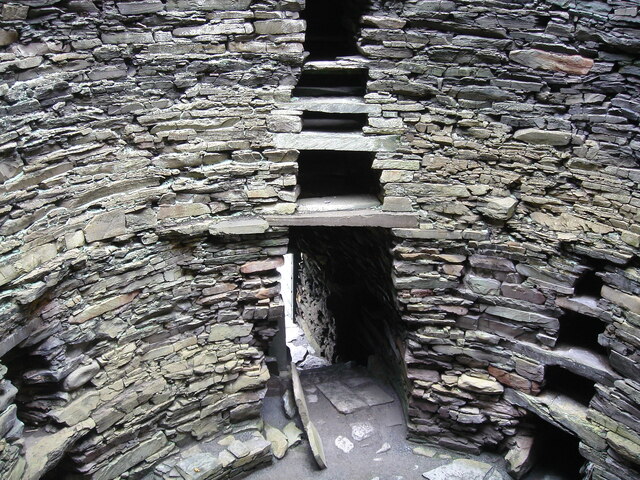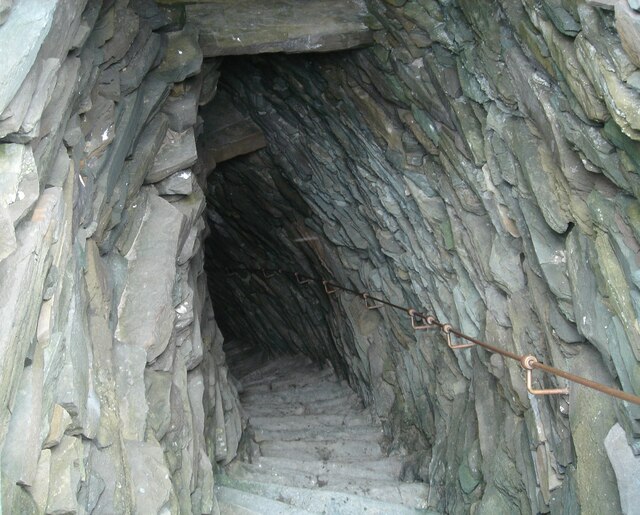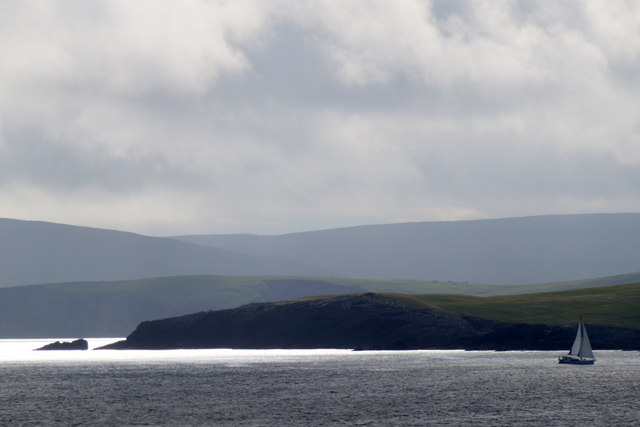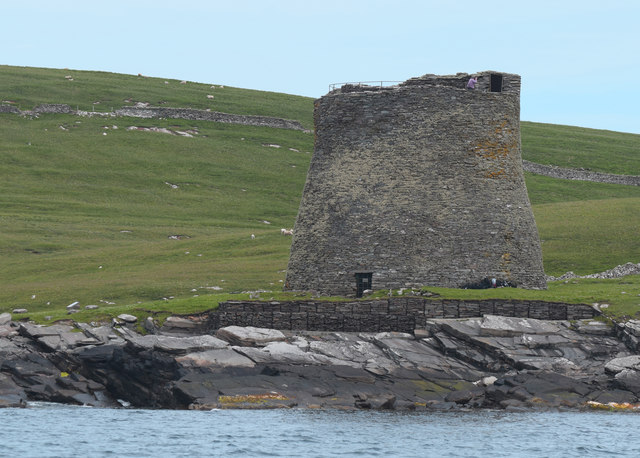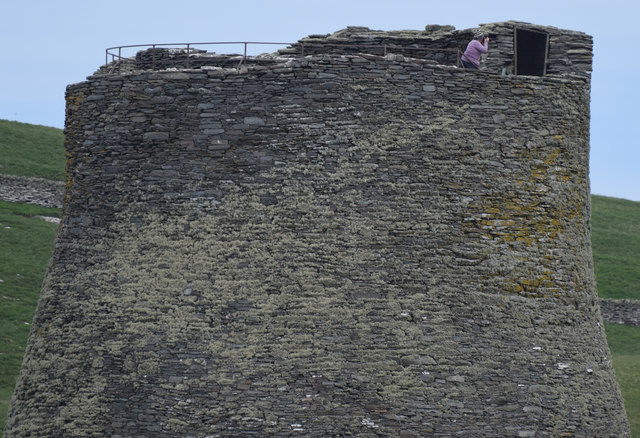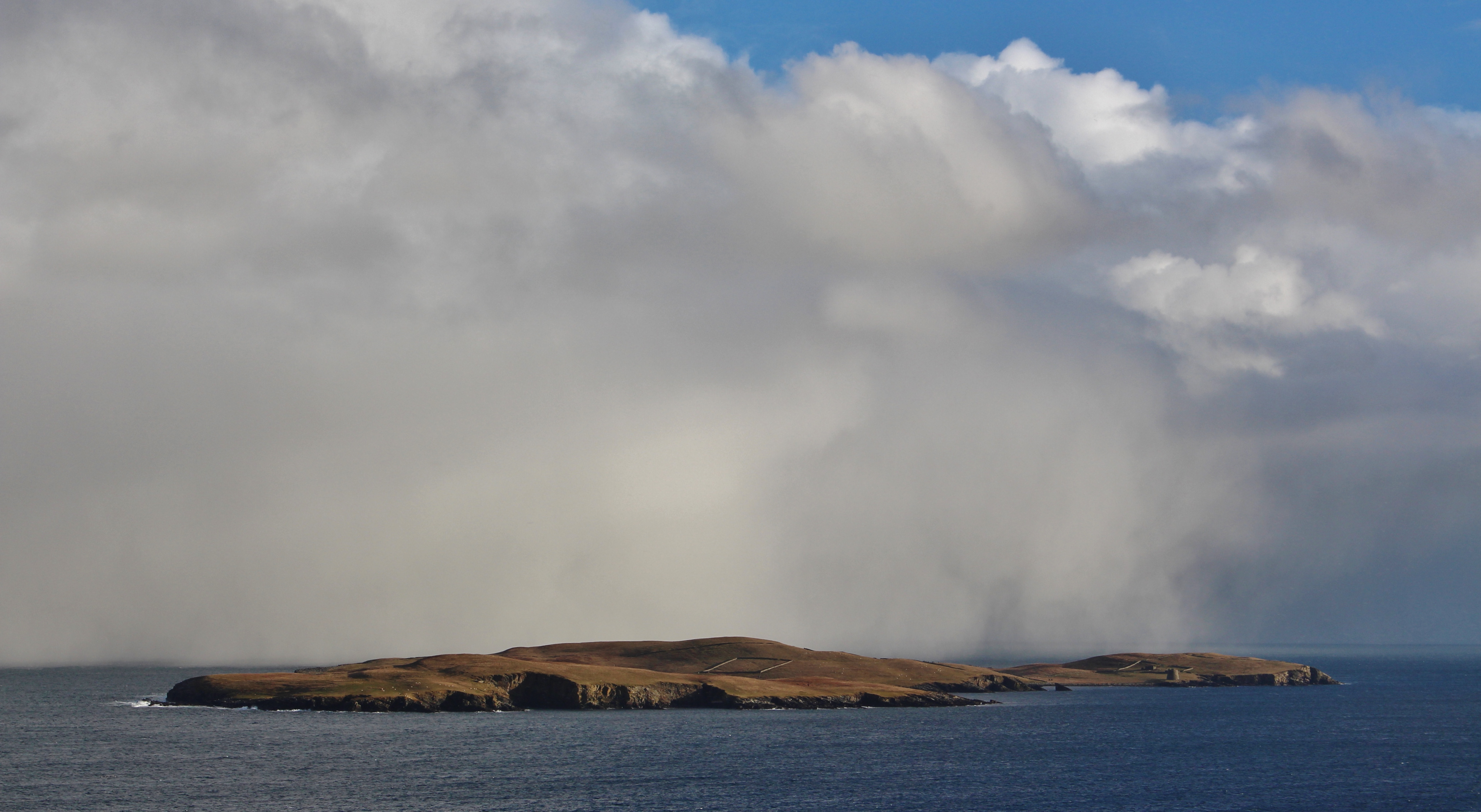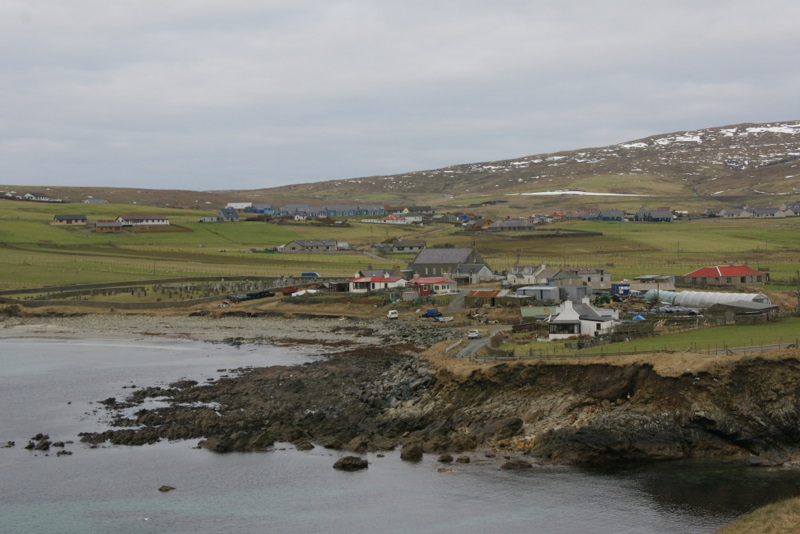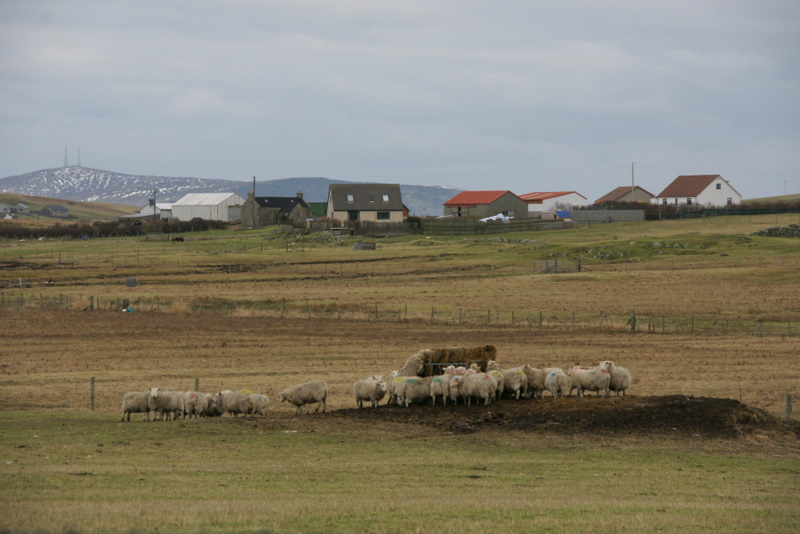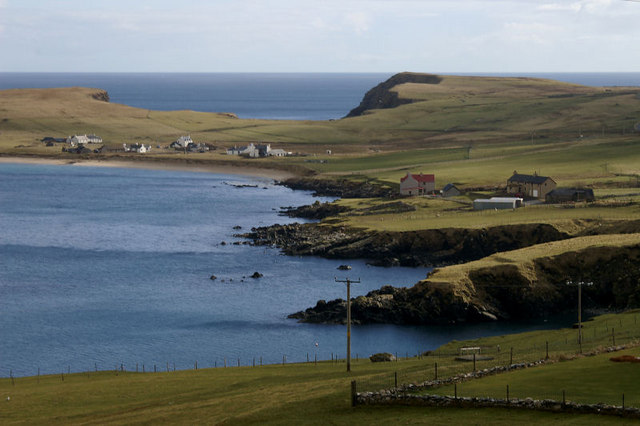Muckle Bard
Coastal Feature, Headland, Point in Shetland
Scotland
Muckle Bard
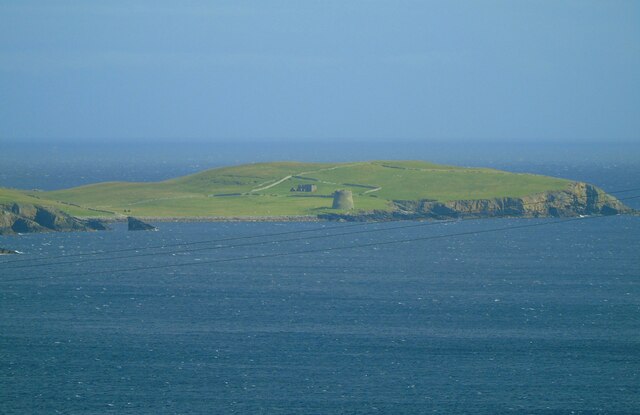
Muckle Bard is a prominent coastal feature located in Shetland, an archipelago in Scotland. It is categorized as a headland or a point, depending on the perspective. Situated along the rugged coastline, Muckle Bard offers breathtaking views of the North Atlantic Ocean and the surrounding cliffs.
The headland is characterized by its towering cliffs, which rise dramatically from the sea, reaching heights of up to 200 feet. These cliffs are formed from layers of sedimentary rocks such as sandstone and shale, showcasing the geological history of the region.
Muckle Bard is known for its diverse wildlife, particularly seabirds. The cliffs provide nesting grounds for various species, including puffins, guillemots, and razorbills. Birdwatchers flock to this area to observe these magnificent creatures in their natural habitat.
The headland is also a popular spot for outdoor enthusiasts and hikers. A well-maintained trail leads visitors along the edge of the cliffs, offering stunning views of the coastline and the surrounding countryside. The challenging terrain and the fresh sea air make Muckle Bard an ideal location for those seeking an adventurous experience.
Due to its exposed location, Muckle Bard can experience strong winds and rough seas, adding to its rugged charm. It is advisable to exercise caution when visiting, especially during inclement weather.
Overall, Muckle Bard is a captivating coastal feature that showcases the natural beauty and diversity of Shetland. Whether you are a nature lover, a hiker, or simply seeking a peaceful escape, this headland offers a unique and unforgettable experience.
If you have any feedback on the listing, please let us know in the comments section below.
Muckle Bard Images
Images are sourced within 2km of 59.994877/-1.1623164 or Grid Reference HU4623. Thanks to Geograph Open Source API. All images are credited.




Muckle Bard is located at Grid Ref: HU4623 (Lat: 59.994877, Lng: -1.1623164)
Unitary Authority: Shetland Islands
Police Authority: Highlands and Islands
What 3 Words
///movie.debate.routs. Near Sandwick, Shetland Islands
Nearby Locations
Related Wikis
Peerie Bard
Perie Bard is one of the Shetland Islands. It is a small islet off the east coast of the island of Mousa.Although named 'Perie Bard' on OS Maps, the name...
Mousa
Mousa (Old Norse: Mosey "moss island") is a small island in Shetland, Scotland, uninhabited since the nineteenth century. The island is known for the...
Broch of Mousa
Broch of Mousa (or Mousa Broch) is a preserved Iron Age broch or round tower. It is on the island of Mousa in Shetland, Scotland. It is the tallest broch...
Sandwick, Dunrossness
see also Sandwick, Whalsay and Sandwick, OrkneySandwick (Old Norse: Sandvik "Sandy Bay") is a village and an ancient parish in the Shetland Islands, Scotland...
Hoswick
Hoswick is a settlement in Sandwick in the south mainland of Shetland, Scotland, on the eastern part of the Dunrossness civil parish. It is separated from...
Catpund
Catpund is a quarry site in Shetland, Scotland, where steatite vessels were cut from the rock from prehistory onwards. The quarrying marks are still visible...
Mail, Shetland
Mail is a hamlet on the island of Mainland, in the Shetland Islands, Scotland. == Geography == Mail is located on the south-eastern side of the island...
Levenwick
Levenwick is a small village about 17 miles (27 km) south of Lerwick, on the east side of the South Mainland of Shetland, Scotland. It is part of the parish...
Nearby Amenities
Located within 500m of 59.994877,-1.1623164Have you been to Muckle Bard?
Leave your review of Muckle Bard below (or comments, questions and feedback).




